K.B. Appachu remembers his days when he surveyed Indo-China border at the time of Chinese aggression in 1961
While it is common for Kodagu youth to join the Armed Forces and dedicate their lives for their Nation, ready to make the supreme sacrifice, there are some sons of the soil who have earned name and fame through their service in the Survey Department. One such hero is Kalyatanda B. Appachu, son of late Kalyatanda A. Belliappa. Born on 24.6.1935 in Virajpet town, Kodagu District — when it was a ‘C’ State — Appachu retired as Superintending Surveyor, Survey of India, after a long, challenging and fruitful innings.
In this interview to Star of Mysore, he shares his experiences in the Indo-China border at a time when India had to face Chinese aggression and lose many precious lives due to the wrong policies of our then leaders. Excerpts.
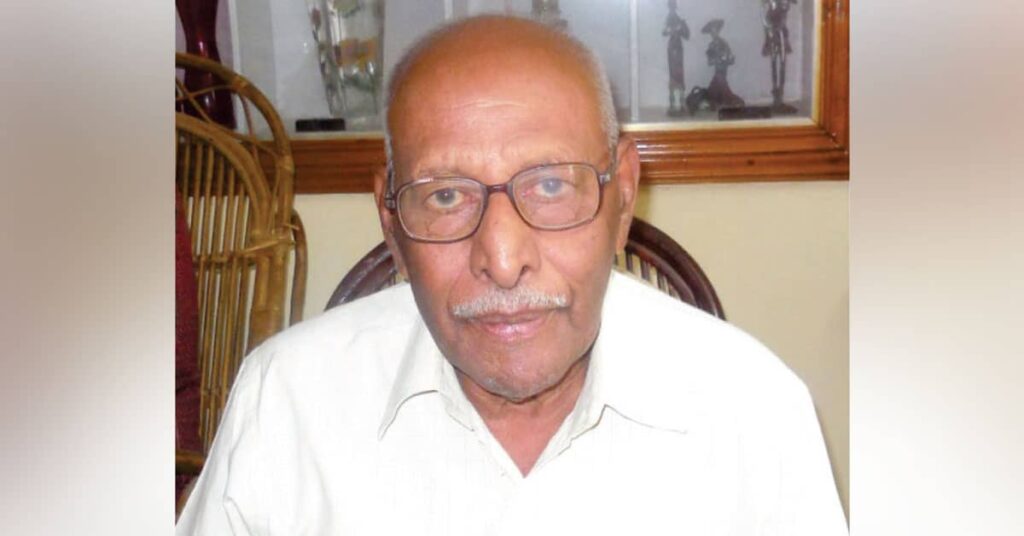
Star of Mysore (SOM): I have heard that during your time, it was natural for many youths from Kodagu to join the Armed Forces and yet you seem to have preferred the Survey Department.
K.B. Appachu: Yes. That was the time when Field Marshal K.M. Cariappa and General K.S. Thimmayya were serving the country. As a Kodagu youth, I too had a desire to join the army and become an officer. During my school days, I had joined the Scouts and Guides and NCC and when I was studying in Madikeri Government College (now Field Marshal K.M. Cariappa College), I had passed ‘A’, ‘B’ Certificate examinations. I could not take up ‘C’ Certificate examinations as there was no exam centre in Madikeri then in 1957 and due to financial constraints I could not go to Madras. But I am happy that I joined the Survey Department in 1959 that provided me an opportunity to serve my motherland.
SOM: Why do you say so?
Appachu: Identifying the route for National and State Highways, surveying and marking the land for railway lines to pass, surveying India’s borders and enabling the Armed Forces to protect them and by identifying enemy territories – all these were part of my job and I am proud to say that I have served the Nation.
SOM: A soldier’s life is very risky. Does it mean the same for a surveyor?
Appachu: Yes. We too have to risk our lives during the course of our profession. From February 1959 to 1961, I underwent training in surveying for 2 years in Dehra Dun, Hathibarkala Estate. I had practical Topographical Survey Training in Rajpur, Mussoorie.
One ‘Do or Die’ incident I remember during my training. At the end of the training, we were to do a final ‘Survey Scheme’ independently for which I was given a survey scheme in Herbertpur, UP. I took my equipment and went up the hill station for observation in Shivalik ranges. The approach to the hill station was along a slope but I took a short-cut route along a cliff.
The squad could not follow me but I started climbing along the cliff without my shoes. It was only four feet to the top and I stood there with the support of a small protruding stone and I also held a root of a plant. However, I realised that I could neither climb up nor get down from this position and I was hanging precariously. People by the side of the road were watching and shouting.
At that moment I just remembered my parents whose photo was inside my haversack. I felt that I was destined to roll down the cliff and embrace death. I prayed and closed my eyes. Suddenly I heard some voices from the top and I believe that they were like divine intervention. I remember that they said, in Hindi, “Officer what happened? Don’t fear. We will save you”.
Another batch of survey squad had come there for observation. They saw my plight and used signal poles and asked me to hold them tight. I followed their instructions and they were able to pull me up inch-by-inch to the top and saved my life. I thanked God for giving me a new lease of life. The report I had submitted about the survey work was considered one of the best reports. I was later deputed to NEFA (North-East Frontier Agency), now Arunachal Pradesh on the Indo-China border.
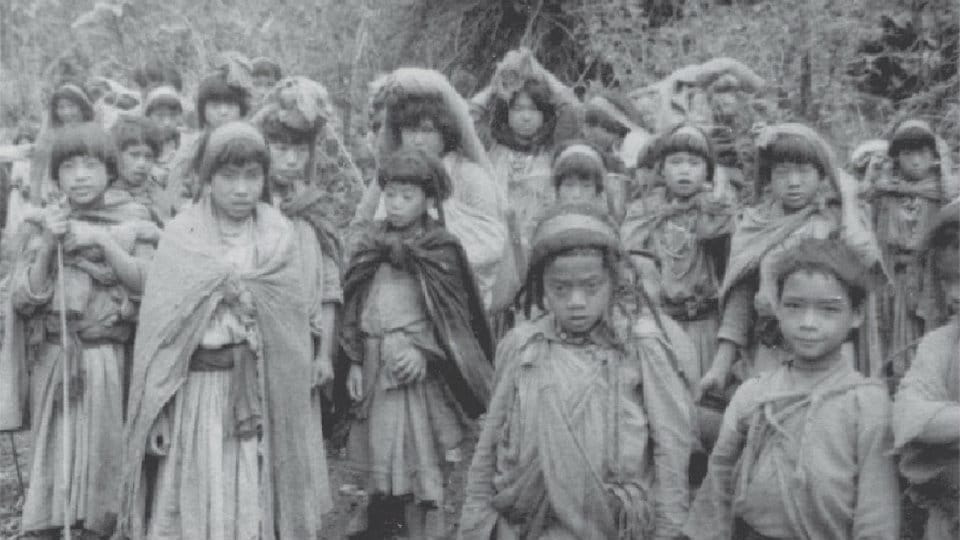
SOM: Did you encounter any life-threatening situation in NEFA?
Appachu: When I was in NEFA (1961-62) there was tension between India and China. India had declared the McMahon Line as the International border between India and China. This was not acceptable to Chinese who considered NEFA as Aksai-Chin and claimed it as their own. In this difficult situation, we had to carry out the survey amidst Chinese threat. Moreover, there was no earlier map that could give us a model or some direction. It was a daunting task. My area of work was in Subansiri Frontier Division in NEFA. I collected documents and equipment and proceeded for field work. I left Shillong headquarters to Jorhat by truck. From Jorhat, we were air-lifted by Kalinga Airlines to Daporijo in Subansiri Frontier Division.
My area of work was to March for 12 days from the base camp Daporijo and my squad comprised 50 Nepali porters, 12 Bhihari Khalasis (peons) from Survey of India, three escorts from Assam Rifles and one local Tribal interpreter. We collected the rations and after marching for 12 days, we reached the area of work. One batch of 12 porters used to be with me and the other batches used to bring rations from the base camp to our subsidiary camps. As we moved further with our survey work, we had 2-3 zones where Dakota planes from Kalinga Airlines used to drop bags of rice, dal, oil tins, onions, potatoes. Parachutes were used to drop supplies like oil tins and goat (for meat).
SOM: Tell us more about the terrain, nature of work and risky situations.
Appachu: The terrain was steep and was 10,000 ft above the sea level, covered with snow. Our nature of work was to establish survey stations on hill tops. Once in a month we used to get only two to three days of clear blue sky. But sometimes as the sun rose, clouds used to form and settle on the mountain top itself, preventing us from carrying out observations even on a clear day.
Another risky situation was crossing the rivers. We had to use only the cane-suspended hanging bridges that were unsystematically laid down with wooden pieces. While crossing, if you look at the flowing water you feel as if your bridge is flowing in the opposite direction – due to relative motion – as fast as the river flowed.
I camped for a month on top of one hill waiting for a clear day. Mostly I used to be with books and as I was not talking much, my tongue grew thick and I could not talk properly. When you handle the theodolite instrument to survey, you used to get an acute pain in the hand due to freezing temperatures and you cannot fold your fingers.
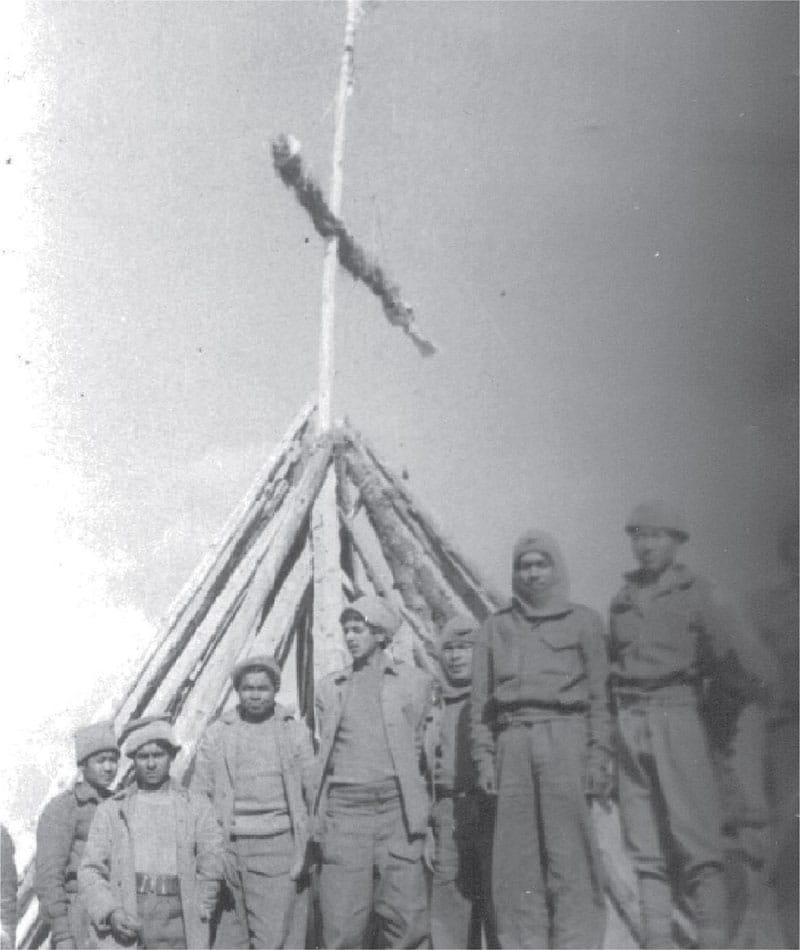
In such situations I used hot-water bags to keep my fingers warm. In the evening, after food, Nepali porters used to sing songs and the water-carrying drums doubled up as music instruments. This field season of 1961-62 was quite successful and I was in the field for about eight months eating the same air-dropped ration and staying in Arctic tents and enjoying the company of Nepali porters.
To reach the top of the mountain, we used to pass through interior areas where we came across primitive tribes (Tagins). We used to talk to them with the help of an interpreter. In each outpost, men from Assam Rifles, CRPF and Army were posted and they had the task of collecting secret information and pass it on to their respective headquarters. Whenever we returned from the hill top and reached the outpost we were treated as VVIPs just to gather information from us on the latest developments in the area and about Chinese spy groups4
The NCC and Scouts and Guides training which I obtained during my school and college days was very useful to be a leader. Porters used to carry about 30 kg load on their back and used to walk with me. After the survey work, I returned safely to Shillong. Glad to say that I was given Honorarium from the Survey Department. I could enjoy tough field work only because I took up challenge in each step.
PART 2
Son Of Kodagu Leaves His Footprint On Snow-Clad Mountains -2
While it is common for Kodagu youth to join the Armed Forces and dedicate their lives for their Nation, ready to make the supreme sacrifice, there are some sons of the soil who have earned name and fame through their service in the Survey Department. One such hero is Kalyatanda B. Appachu, son of late Kalyatanda A. Belliappa. Born on 24.6.1935 in Virajpet town, Kodagu District — when it was a ‘C’ State — Appachu retired as Superintending Surveyor, Survey of India, after a long, challenging and fruitful innings.
In this interview to Star of Mysore, he shares his experiences in the Indo-China border at a time when India had to face Chinese aggression and lose many precious lives due to the wrong policies of our then leaders. Excerpts.
SOM: Did you face a situation when you had to stay hungry but still work?
Appachu: At NEFA, there was heavy snowfall and the weather was bad, cloudy and raining. As such there was no airdrop of rations for 2-3 months. For survival, I had to approach CRPF and Army units and borrow food. Meanwhile there was Chinese aggression from Longju side. Immediately we started retreating and reached our base camp at Daporijo after 16 days of marching. At night, we used to hear gunshots and early in the morning, the moment we could see footpaths, we used to start marching. Once at Daporijo, people had gathered from all the other outposts for evacuation by air-lifting. The same night, there was a wireless message that Chinese troops will be surrounding Daporijo any moment. All the ladies, children of officials started crying. The Kalinga Dakota aircraft meant for Survey of India personnel landed at Daporijo. Officers approached me and requested me to evacuate ladies, children and aged persons in the sortie meant for us. On seeing their plight, I obliged.
Later I got a message from our headquarters asking me to immediately destroy all the survey records etc. including cash and prevent Chinese from laying their hands on them. I had Rs. 40,000 cash in my trunk and I did not want to burn it. I went inside my tent, packed the bundle of notes in a leather bag, and wrapped it in a blanket and put it in my haversack. With my parent’s photo and a few glucose packets, I started off marching towards Jorhat, which took 10 days.
There was nothing to eat. On the way there were a number of burnt down Tusker unit camps. (Tusker units are deployed to make roads in hilly areas). We searched and could get tinned fruit or potatoes. During night I used to have the money bag as my pillow. If anyone had a clue that I was carrying so much money, they would have murdered me for it. The last two days I went to villages and begged for food. Immediately after reaching the base camp at Jorhat, I handed over the Rs. 40,000 to my superior officer (Col. S.R. Kishore). I am proud of this act.
SOM: What actually triggered Chinese aggression
Appachu: We had started off our technical work. From tribals and local officials we came to know that India under the Prime Ministership of Jawaharlal Nehru and V.K. Krishna Menon as Defence Minister (with the ill advice of Mallik) had opened a number of outposts along the McMahon Line in 1961, keeping some soldiers in each outpost. This irritated the Chinese their soldiers simply walked inside our area with Tibetans as guides since they knew the route to NEFA. In the encounter most of the Tibetans died. Gelansiniyak, where I used to camp, was the place the Chinese camped too. And wherever I had chiselled ‘SURVEY OF INDIA’ on the bark of trees, they wrote something in Chinese language. I feel that it was a wrong decision on the part of Jawaharlal Nehru and we lost many soldiers.
One more incident worth mentioning is that seven of us went to a mountain top north of Taksing in Namkachu Valley. It took us two days to reach the top. I set up my theodolite instrument and started observing the Chinese area and I could find a little bit of smoke and could see Chinese soldiers moving around. I showed it to my men and I made them stand in a line and shouted “Bolo Bharat Mathaaki Jai” and run down the mountain. By evening we reached an outpost and narrated the incident to our Government officials. In turn, they flashed the message to New Delhi and at 8 pm news, we heard that ‘Chinese Soldiers were sighted in Namkachu Valley’. I worked for about 8 months in Subansiri Frontier Division successfully. Later on for all the sincere and hardwork, I was awarded a Commendation Certificate by the Governor of Assam.
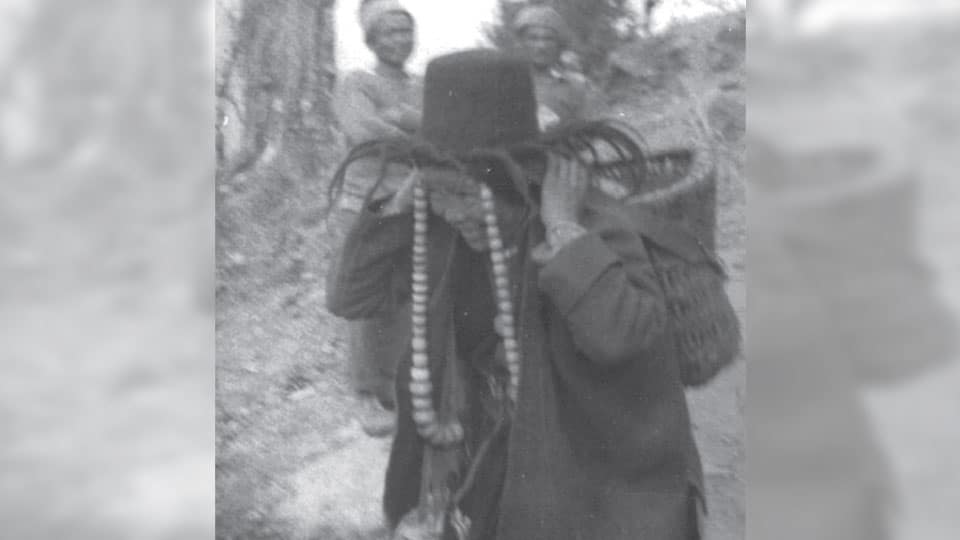
SOM: What other incidents come to your mind at NEFA?
Appachu: A lot of virgin area near the McMahon Line was unexplored. As such, it was planned to carry out exploratory survey to the north of Anini outpost. Seven technical hands were selected and our officer in-charge Major L.P. Sharma was our team leader. We reached Jorhat and were waiting for the airlift and at that point, Major L.P. Sharma received a message that he was promoted and had to join duty immediately.
He left and Capt. Prithviraj was made the team leader. We collected our squad, ration, etc., and after seven days of marching, we established our base camp at Bruni. We were preparing to start exploratory survey and Capt. Prithviraj received a message saying that he was promoted as a Major and he was asked to report immediately in Shillong. He left and I became the team leader.
I wanted to establish a survey station at an altitude of about16,000 feet. With the help of aerial photographs, I studied the area and with my team scaled the mountains. In some places we used rope climbing also and by evening we reached a small lake and we camped there itself. My Arctic tent was set on a flat boulder. The entire area was full of boulders. The next day 3-4 men and I went to the peak to set our signal (pole and cross) and instrument. It started snowing heavily. So we left the instrument on top and came down to the camp. At night after dinner, I went inside the sleeping bag and porters were sitting by the side of fire. We heard a gunshot and a loud cry of a porter (Angphuri Sherpa). My cook and escort were cleaning the rifle and by mistake one of them pressed the trigger and the bullet pierced through the porter’s stomach and the bullet went out from back. He was shouting and crying due to pain. I tried to console him by saying that he would be airlifted the next day. But at night his brother gave him some water and he died.
Next morning on the other side of the lake, we removed a few small boulders and buried him by covering the body with small boulders and performed the last rites. The snowfall continued. I pursued 2-3 best porters to climb up to bring the instrument back from the top. I was reading the abridged Bhagavad Gita for their safe return. They returned safe but snowfall continued and the entire area was covered with snow. There was no ration even as the ration squad could not reach us.
We made a bed by spreading small stones and pebbles and spread grass on top of them and spread the blanket for all of us to sleep. I was putting my hand into a small hot spring throughout the night. We had nothing to eat but took one or two pieces of Muskdeer fried meat and two tea-spoons of glucose each. The next day our Nepali porters with their ‘Kokari’ (bill hook) tried to cut down pine trees and make it fall across the stream. It was a failure a couple of times, but one tree fell across the stream and got struck between two boulders and it was shaky due to the water flow. It was a ‘Do or Die’ situation
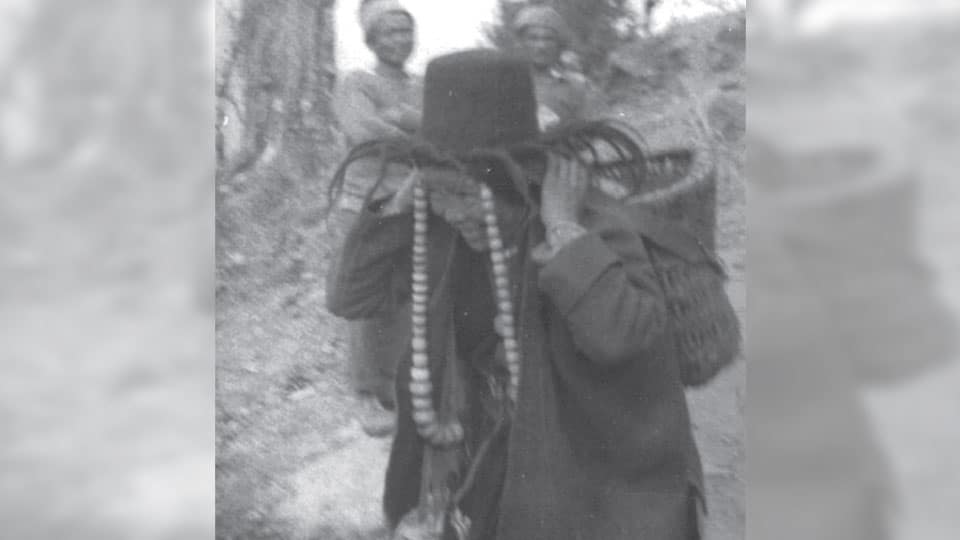
As a last resort, we crossed the stream one by one walking over the wobbly log. We walked along a small valley and reached a point from where we could not walk due to darkness. We sat with a blanket by the side of a big boulder and somehow spent the night. Due to severe hunger, I was getting stomach and spinal cord pain. In the morning, I could not stand up due to stiff knees. Immediately, 3-4 good porters encouraged me by saying that I would be lifted to base camp. It was bad luck that our search party with ration could not reach us again. They later came to us and started preparing rice. Two porters massaged my knees continuously for one hour with mustard oil. I could stand up slowly. The rice was cooked and we ate it with some mustard oil. It was so tasty and it was like Godly food. It usually takes two hours for us to reach our base camp but it took six hours for us as I could walk very slowly.
PART – 3
Son Of Kodagu Leaves His Footprint On Snow-Clad Mountains -3
While it is common for Kodagu youth to join the Armed Forces and dedicate their lives for their Nation, ready to make the supreme sacrifice, there are some sons of the soil who have earned name and fame through their service in the Survey Department. One such hero is Kalyatanda B. Appachu, son of late Kalyatanda A. Belliappa. Born on 24.6.1935 in Virajpet town, Kodagu District — when it was a ‘C’ State — Appachu retired as Superintending Surveyor, Survey of India, after a long, challenging and fruitful innings.
In this interview to Star of Mysore, he shares his experiences in the Indo-China border at a time when India had to face Chinese aggression and lose many precious lives due to the wrong policies of our then leaders. Excerpts.
SOM: Any bitter experience that haunts you?
Appachu: At the base camp, we took rest for 3 days. After some time we found that one porter was missing. In order to bring instruments we had left behind as well as to search that missing porter, we began tracking back again and on reaching the spot where we had crossed the stream, we could see some footprints deviated towards a small cave. We went there and could find the missing porter lying inside the cave. He was dead. All of us passed mud to cover the body. Then we went to the previous camp where we had left the instruments, collected them and returned to our base camp.
Meanwhile another team which had gone to other peak started returning. On their way, they were thrown down by an avalanche and all escaped except for one peon Rameshwar. He was carrying the instrument on his back and was buried deep in snow due to weight. Our search party could not find him but next the summer, an Assam Rifles search party could find his dead body and performed the last rites. After this bitter experience of exploratory survey, all of us returned to the party headquarters in Shillong.
SOM: Any incident you still regret?
Appachu: In 1966-67 Sultan Batheri (Karnataka-Kerala border), I was asked to carry out Model Control work for photogrammetric work for the Defence Department around Ooty area. Before proceeding for field work, when I was in the party HQ in Bangalore, I got an intimation from Survey General’s Office, Dehra Dun that I had been awarded Silver Medal by the Governor of Assam for meritorious service in NEFA. It was communicated to me orally by my Officer In-charge. I was asked to go to Shillong to receive the award on Republic Day in 1967 from the Governor of Assam. I was very keen to go but my Officer In-charge told me that they cannot send me as I was doing a top priority work for Defence. No matter how much I pleaded, the final reply was ‘No’.
I still regret that I could not receive the award in person. However, the medal and the citation were sent to me later.
SOM: How was the survey work at Sultan Batheri? Any incident you want to recall?
Appachu: One day we were to go to the top of a hill in an area that was infested by wild elephants. I took one of the mahouts from the camp as he knew how to scare elephants. On the way he sensed the presence of elephants as we could see freshly cut plants. As we neared an uneven area, suddenly one wild elephant ran towards us trumpeting and kicking up dust. I wanted to follow the mahout but he suddenly, like a monkey, climbed a tree and I saw the elephant approaching me. I started running fast but from the opposite direction I saw three more elephants running towards me. I lost my senses and when I regained composure, I found I had climbed a tree. Due to reflex action, I had run about 10-12 meters inside the forest and climbed up a tree.
This incident happened at about 9am and by about 11am there were about 3-4 elephants gathered at the spot. It was a mother elephant with her baby and mother elephants are normally more ferocious than a rouge elephant. By about 1 pm due to hot sun, the elephants walked away. All the people who had climbed trees got down. Thank God, all were safe.
Cautiously we collected the equipment and returned to our camp. We were in no mood to eat or even to talk. I informed my officer about the incident and after two days he came down to Ooty and conducted an enquiry. He said I should have taken more precautions by taking Police escort to the area of work. I told him that it was not possible to go to Police station daily as it was far away. Then I told him that I was not scared of elephants and if he sends me the blueprint of the area I would complete the work. He went back to Bangalore and sent the blue print and equipment. I worked hard for two months and completed the assignment successfully despite encountering wild elephants twice.
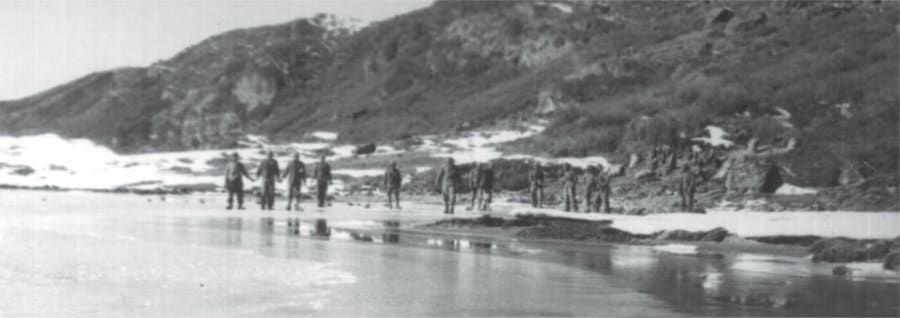
What is McMahon Line?
McMahon Line is a line proposed by McMahon in the Simla Accord which was considered invalid by both Tibetans and Chinese government. It is the effective boundary between China and India although its legal status is disputed by the Chinese.
The line is named after Sir Henry McMahon, foreign secretary of the British-run Government of India and the chief negotiator of the convention at Simla. It extends for 550 miles (890 km) from Bhutan in the west to 160 miles (260 km) east of the great bend of the Brahmaputra River in the east, largely along the crest of the Himalayas. Simla (along with the McMahon Line) was initially rejected by the Government of India as incompatible with the 1907 Anglo-Russian Convention. This convention was denounced in 1921. After Simla, the McMahon Line was forgotten until 1935, when British civil service officer Olaf Caroe convinced the government to publish the Simla Convention and use the McMahon Line on official maps.
The McMahon Line is regarded by India as the legal national border. It is disputed by China. As recently as 2003, the Dalai Lama said that the disputed region was part of Tibet, in 2008, he said that “Arunachal Pradesh was a part of India under the agreement signed by Tibetan and British representatives.”
Rice with elephant urine !
Early in 1965, the Survey Department had recruited a few trainees and I was given the responsibility of training them in all aspects of topographical survey. In the field, I was designated as the Camp Officer and we established our camp at Changlang in the foothills of NEFA.
One incident comes to my mind here. At the base of the hill top, we had pitched the tent just to spend the night. Our people took water from a ditch and cooked rice and my cook served it to me. The moment I put it into my mouth, I had widespread burning sensation and I vomited the rice. I washed my mouth with bottled water and slept off. At night an elephant had passed by the side of our tent but caused us no harm. The next day morning when we checked the so called water in the ditch, we found that it was actually elephant’s urine! And without realising it, the cook had prepared rice out of it.
AWARDS AND RECOGNITIONS
- Honorarium received from Survey of India.
- Commendation Certificate received from the Governor of Assam for meritorious service in NEFA (North East Frontier Agency), now Arunachal Pradesh.
- Silver Medal received from the Governor of Assam for meritorious service for 5 years in NEFA.
- Appreciation letter from the Government of India, Ministry of External Affairs in recognition of meritorious services in the Indo-Pakistan boundary demarcation in Kutch in Gujarat.
- A memento – Gold-coated replica of Pashupathinath Temple was presented by trainees and staff of Survey Training Centre, Kathmandu,Nepal.
- Lifetime Achievement Award presented by the association of Engineering and Surveying Consultants for exceptional contribution in the field of surveying.
[Concluded]
source: http://www.starofmysore.com / Star of Mysore / Home> Feature Articles / by K.B. Appachu / May 04th, 05th and 06th, 2017 / in 3 Parts

